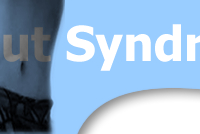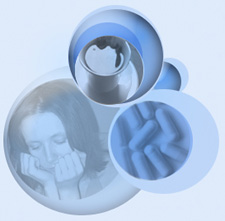 |
 |
 |
 |
|
 |
 |
 |
 |
|
||||||||||||||||||||||||||||||||||||||||||||||||||||||||
iv)
Contains a major part of the chemical detoxification system of the
body, and The leaky gut (or LGS) is a poorly recognised but extremely common problem. It is rarely tested for. Essentially, it represents a hyperpermeable intestinal lining. In other words, large spaces develop between the cells of the gut wall, and bacteria, toxins and food leak in. The official definition is an increase in permeability of the intestinal mucosa to luminal macromolecules, antigens and toxins associated with inflammatory degenerative and/or atrophic mucosal damage. If the gut is not healthy, neither is the rest of the body. It is the point of fuel and nutrient entry. If healing is at a standstill look at the gut to see if this is the block. Chemical sensitivity, fibromyalgia and escalating food allergies are among the many problems caused by the leaky gut. If gas, bloating, abdominal pain, indigestion, alternating constipation and diarrhoea are symptoms, irritable bowel syndrome may not be all that's going on. The Mucosal Barrier The barrier posed by the intestinal mucosa is, even in normal subjects, an incomplete one. Small quantities of molecules of different sizes and characteristics cross the intact epithelium by both active and passive mechanisms. The route by which such transfer occurs is, at least in part, dependent on molecular size. Molecules up to about 5000 Daltons in size cross the epithelial membrane of the microvilli. Larger molecules may utilise an intercellular pathway or depend on being taken up by endocytosis entering the cell at the base of the microvilli. How Does The Gut Become Leaky? Once the gut lining becomes inflamed or damaged, this disrupts the functioning of the system. The spaces open up and allow large food antigens, for example, to be absorbed into the body. Normally the body sees only tiny food antigens. When it sees these new, larger ones, they are foreign to the body's defence system. So the attack results in the production of antibodies against once harmless, innocuous foods. Isn't Leakier Better? It might sound good that the gut can become leaky, because it would seem that the body would be better able to absorb more amino acids, essential fatty acids, minerals and vitamins. For the body to absorb a mineral it does not just slowly diffuse across the gut membrane it must be attached to a carrier protein. This protein hooks onto the mineral and actually carries it across the gut wall into the bloodstream. However, when the intestinal lining is damaged through inflammation these carrier proteins get damaged as well, so now the victim is vulnerable to developing mineral and vitamin deficiencies. The 7 stages of the 'inflamed' gut. 1 . When the gut is inflamed, it does not absorb nutrients and foods properly and so fatigue and bloating can occur. 2. As mentioned previously, when large food particles are absorbed there is the creation of food allergies and new symptoms with target organs, such as arthritis or fibromyalgia. 3. When the gut is inflamed the carrier proteins are damaged so nutrient deficiencies occur which can also cause any symptom, like magnesium deficiency induced muscle spasm or copper deficiency induced high cholesterol. 4. Likewise when the detox pathways that line the gut are compromised, chemical sensitivity can arise. Furthermore the leakage of toxins overburdens the liver so that the body is less able to handle everyday chemicals. 5. When the gut lining is inflamed the protective coating of lgA (immunoglobulin A) is adversely affected and the body is not able to ward off protozoa, bacteria, viruses and yeast's like candida. 6. When the intestinal lining is inflamed, bacteria and yeast's are able to translocate. This means that they are able to pass from the gut lumen or cavity, into the bloodstream and set up infection anywhere else in the body. 7. The worst symptom is the formation of antibodies. Sometimes these leak across and look similar to antigens on our own tissues. Consequently, when an antibody is made to attack it, it also attacks our tissue. This is probably how autoimmune disease start. Rheumatoid arthritis, lupus, multiple sclerosis, thyroiditis and many others are members of this ever-growing category of 'incurable' diseases. |
|||||||
 |
 |
 |
 |
|||||
 |
 |
|||||||
 |
 |
|||||||















